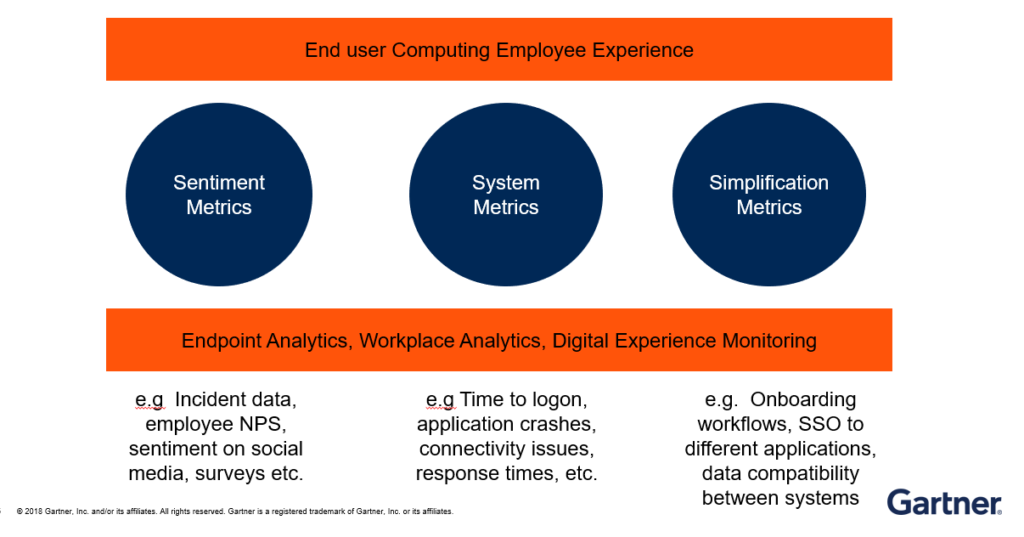In this post, I will share insights from a recent call with a client who wanted to create a best-in-class employee experience.
With most employees working remotely, this becomes esp. important not only for employee productivity but also for employee engagement.
To set the scene, this is about creating engaging employee experiences from an end user computing perspective.
While modern device management and mobile-first, SaaS-first approaches are no doubt important, it helps to create a broad framework to measure and enhance digital workplace experience in general.
USER EXPERIENCE
Let’s first contextually define user experience for this discussion.
ISO defines user experience as “user’s perceptions and responses that result from the use and/or anticipated use of a system, product or service”.
These user perceptions and responses include the users’ emotions, beliefs, preferences, perceptions, comfort, behaviours, and accomplishments that occur before, during and after use.
This is a key insight – user expectations from a product / service seeds their perceived experience while the actual experience leaves a lasting impression even after its use.
A THREE-PRONGED FRAMEWORK FOR QUANTIFYING END USER COMPUTING EXPERIENCE
Although everybody agrees that end user computing experience is important, quantifying that experience is difficult.
Figure 1 depicts a three-pronged framework that captures metrics related to user sentiment, system data and ease of workflows. This helps measure and improve end user computing experience.

TECHNOLOGIES AND TAKEAWAYS
Technologies such as unified endpoint management, workplace analytics, digital experience monitoring and SaaS Management Platforms provide a lot of the telemetry across the three categories shown in the figure.
However, the key is to use a combination of them and correlate the metrics for maximum benefit.
For example, if the feedback is that “Sales employee experience sentiment is poor during a specific sales user journey”, using the three-pronged framework can help analyse the root cause.
Is it about simplifying the workflow or the wrong choice of endpoint or a combination of both?
In a specific instance, this could point to an endpoint (system metrics) not being suited for a given task or the need to shift (simplification metrics) from one device to another for task completion.
Therefore, “simplification metrics” may indicate symptoms, but “system metrics” may unravel the root cause or vice versa.
Quite a few organizations are also shifting from a focus on SLAs to XLAs. XLAs treat user experience as a continuum in the user journey as opposed to a static snapshot of UX.
It embraces the idea that employee experience is the perceived quality of interactions employees have throughout all touchpoints in their day-to-day work and the contexts that influence those interactions.
In other words, how hard or easy it is for employees to do their best work.
How have you addressed this problem?
First published on Gartner Blog Network





